Banner artwork by Anna_Summer / Shutterstock.com
“Artificial Intelligence (AI) is coming for your job.”
We often hear this. For many jobs, it will be true. Will in-house lawyers be spared? Maybe not from non-disclosure agreement reviews. Many have heard of the 2018 LawGeex report about the AI vs human lawyers challenge in which 20 experienced senior US lawyers were asked to highlight errors in an NDA while the AI contract review platform did the same. The result? The lawyers took an average of 90 minutes to review the NDA with an average 85 percent accuracy. The AI was 94 percent accurate in 26 seconds. OK, so we may stop being asked to review NDAs, but this isn’t a bad thing.
The World Economic Forum’s 2020 The Future of Jobs Report estimates that by 2025, 85 million jobs may be displaced by a shift in the division of work between humans and machines. Are in-house lawyers doomed to be replaced by AI or do we have the skills to withstand the tide? Arguably we do – it’s creativity. While there is discussion about artificial creativity, (AI has been creating works of art and music) Elkhonon Goldberg, author of Creativity – The Human Brain in the Age of Innovation argues against this, “because AI devices still only do what their human designers build into them … their output is by definition, derivative, and therefore cannot be judged as creative.”

Creativity is a skill
Creativity is now one of the most sought-after qualities in the workplace, identified by the World Economic Forum as one of the top 10 skills of the future. It is the cornerstone of solving problems, innovation, and productivity. It can also support our well-being, helping to increase happiness and is a vital quality for the modern in-house lawyer.
Creativity is now one of the most sought-after qualities in the workplace, identified by the World Economic Forum as one of the top 10 skills of the future.
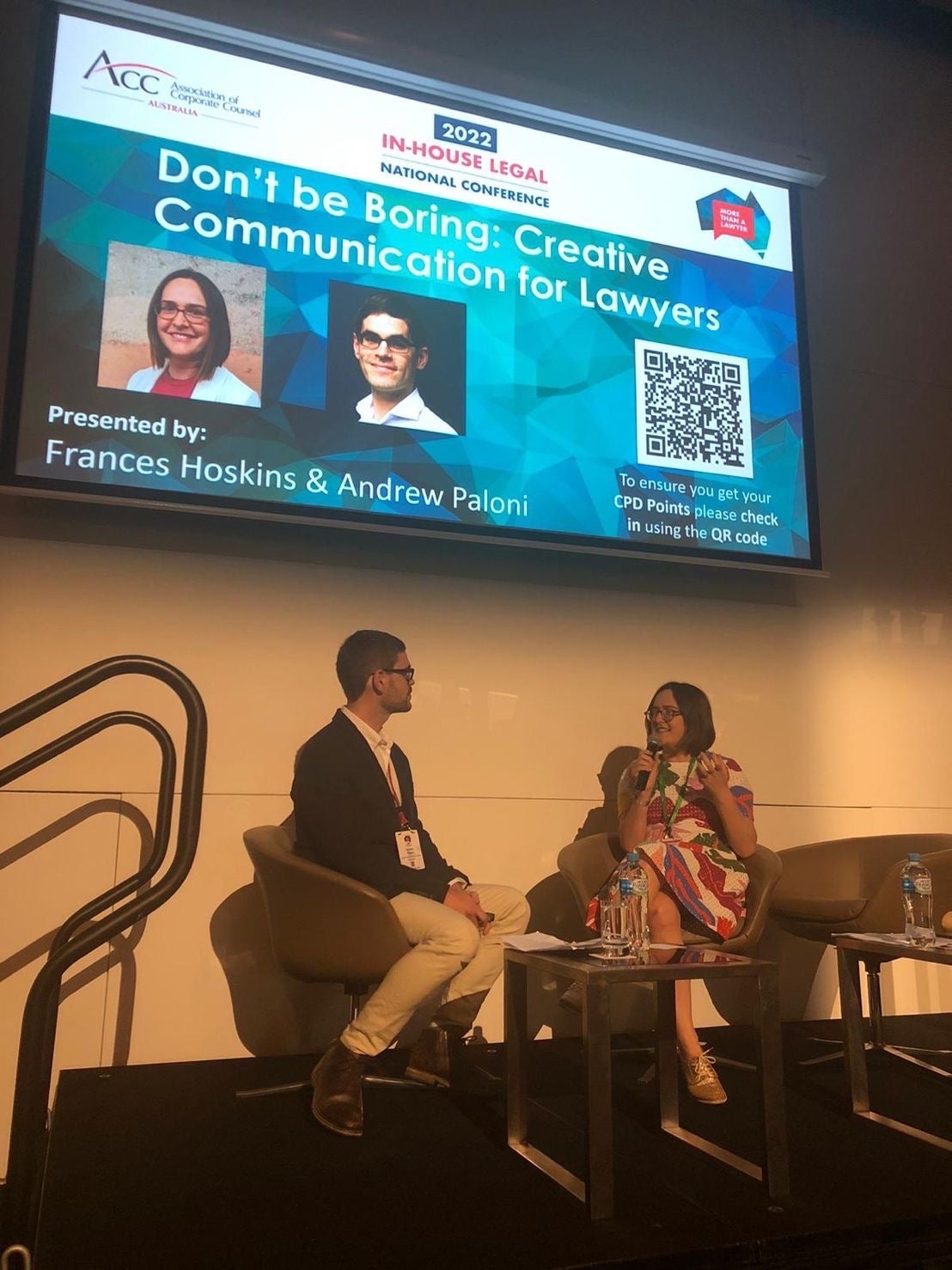
Are lawyers creative and should we cultivate this skill? Frances Hoskins, general counsel, and Andrew Paloni, special counsel, at the Australian Institute of Marine Science (AIMS) think so. They recently presented “Creative Communications” at ACC Australia’s National Conference.
Hoskins says: “Finding engaging and creative ways to communicate legal matters to non-lawyers within the business is vital as an in-house lawyer. This kind of communication ensures that your in-house clients feel empowered, smart, and confident to ask the right questions and act on the legal advice.”
Finding engaging and creative ways to communicate legal matters to non-lawyers within the business is vital as an in-house lawyer.
Hoskins and Paloni spoke to me about what it means to be creative as a lawyer and how we can all bring some creative communications into the workplace.
We discussed their presentation, which Hoskins says, “unpacked different techniques that can help your communications be more enjoyable with clients and connect with them more deeply as part of in-house legal practice” — including the importance of storytelling, engaging emotions, and using humor. We also discussed what underpins all creativity — cultivating divergent thinking, something which we will see also helps increase our own happiness.
What is creativity and can lawyers be creative?
When you think of lawyers, the next word you think of isn’t “creative.” Hoskins agrees: “Traditionally, we haven’t seen legal work as being creative, but I strongly feel that creativity adds an edge that sets the best lawyers apart. Bringing creativity to your work helps you look past the established status quo in finding solutions, and also helps you communicate in ways that are more impactful with your clients.”
Bringing creativity to your work helps you look past the established status quo in finding solutions, and also helps you communicate in ways that are more impactful with your clients.
Creativity is broadly associated with two types of thinking:
- Convergent thinking – Logical, rational, deductive, and focused, aimed at producing “the single best answer to a problem with little or no ambiguity.” It involves perceiving familiar patterns and stored information and emphasises speed and accuracy. We often use this type of thinking as lawyers, and it serves us well.
- Divergent thinking – Spontaneous and free-flowing, described as “true creativity.” It explores more possible solutions (often in parallel) and makes unexpected connections. Divergent thinkers are often “non-conformists,” curious, willing to take risks, courageous, persistent, and resilient.
While creative thoughts often involve both convergent and divergent thinking, it is well documented that divergent thinking becomes limited during times of stress when our fight or flight mode is activated. Enabling our divergent thinking will help us be more creative in our communications.
“For me,” Hoskins says, “creativity is about solving problems in new and novel ways, without just relying on an established procedure or rulebook. It’s also about creating something beautiful that connects with people on an emotional level.”
One way to increase our creativity and broaden our minds is to increase our positive emotions. Social psychologist, Dr. Barbara Fredrickson, says “through experiences of positive emotions people transform themselves, becoming more creative, knowledgeable, resilient, socially integrated, and healthy individuals.” Fredrickson developed the “broaden and build theory” based on the underlying premise that happiness has a very important evolutionary purpose. It has also shown to be a path to unlocking creativity and solving problems (discussed in detail in an earlier article).
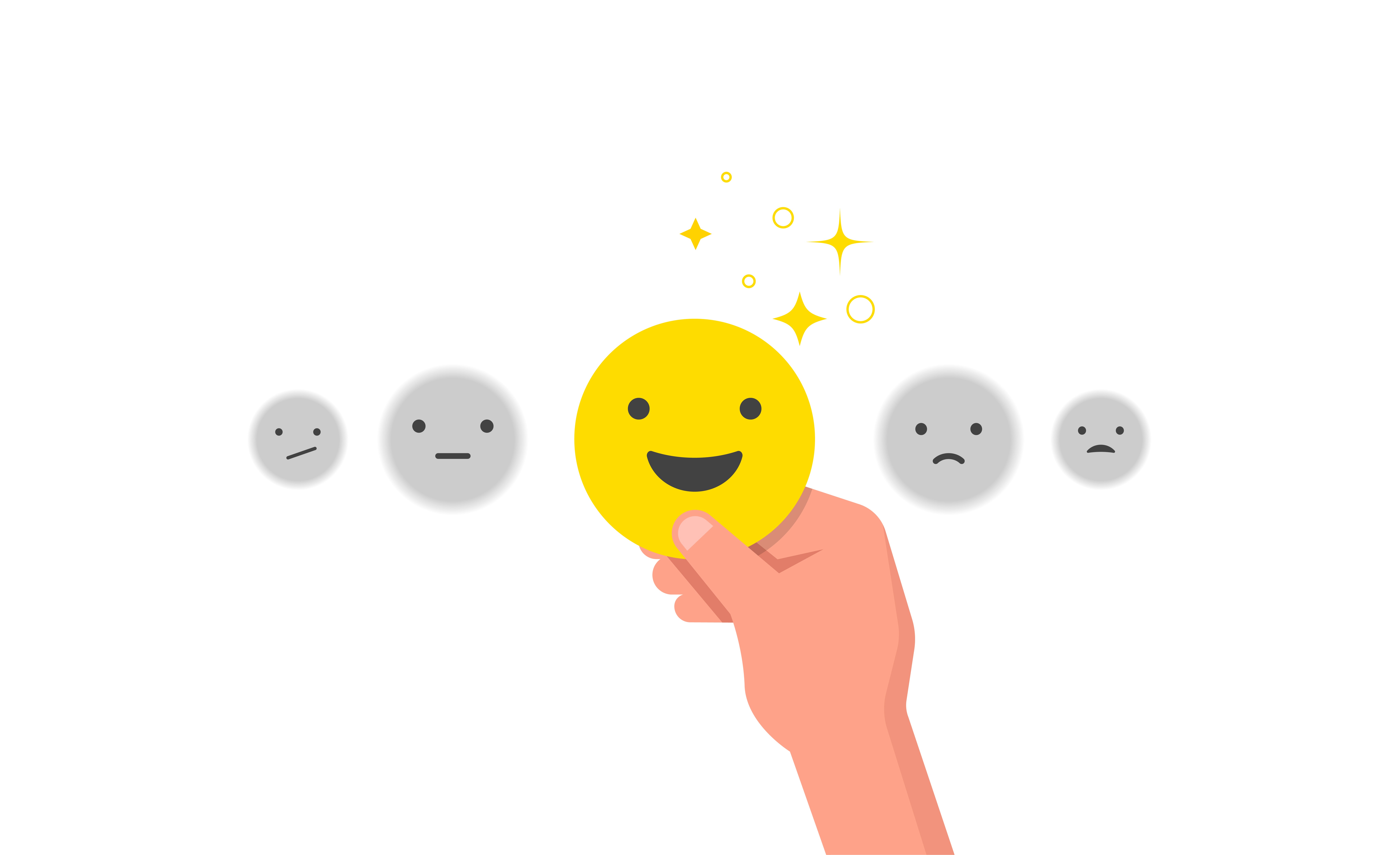
Increasing our positive emotions as a window to creative communication
Our brains are wired towards negativity and Dr. Rick Hanson describes the brain as having “Velcro for negative experiences and Teflon for good ones.” Hanson discusses how we need to engage positive emotions continuously bit by bit to move them from our short-term memory into the brain.
Research has shown that:
- The “broadening effect” of increasing positive emotions floods our brains with dopamine and serotonin, both feel-good chemicals, which Shawn Achor says helps us to sort new information, keep it in the brain for longer, and retrieve if faster.
- Positive emotions “enable us to make and sustain more neural connections, which allows us to think more quickly and creatively, becoming more skilled at complex analysis and problem solving.”
- When we feel “safe” and no longer feel “threatened” we feel soothed, quiet, and content and “become confident enough to look beyond the immediate needs of survival.” We begin to look outwards through “idle curiosity,” scan the world for interesting new ideas, “weave together patterns,” and come up with new concepts.
This cultivates divergent thinking — “the enhanced perspective that this produces lies at the heart of creativity.” Fredrickson found a practical consequence of positivity’s mind broadening powers is enhanced creativity — “a broad mind changes the way you think and act, when you see more ideas come to mind and more actions become possible.”
Hoskins fosters practices that engage both positive emotions and creativity in her team. “I like to foster creativity, as well as a sense of fun, playfulness, and experimental mindset. This is a little contrary to our training as lawyers where we are professional pessimists and perfectionists, and failure is not tolerated. While that approach works for high stakes advice, for some projects shrugging off the perfectionism can really help them get moving and unleash some creativity.”
Increasing our own positive emotions enables us to think more broadly and creatively. It can also facilitate our creative communication in two ways:
- It can help us successfully create and develop the stories to present our advice at work; and
- By infusing those stories with emotions, we engage our clients’ curiosity and convey a message that, thanks to the way the emotions work on the brain, not only resonates but that they will remember.
Successful storytelling
People have always used stories to connect and pass on messages and lessons in a powerful way. It used to be done orally or through dance — not PowerPoint — and was therefore successfully passed down and not forgotten. But how do you tell a good story as a lawyer?
Neuroeconomist Paul Zak’s studies found that, “a story must first sustain attention — a scarce resource in the brain — by developing tension during the narrative. If the story is able to create that tension then it is likely that attentive viewers/listeners will come to share the emotions of the characters in it, and after it ends, likely to continue mimicking the feelings and behaviours of those characters.” By creating trust we produce oxytocin in the audience’s brain.
Hoskins finds Zak’s work compelling, saying, “It resonates with me, including this advice to begin presentations with a compelling human-scale story, one that engages the listener so they feel invested in the character and how the problem will be resolved. This is so much more human and engaging than moving from dot point to dot points of facts and recommendations.”
Hoskins and Paloni work at AIMS, whose research supports the sustainable use and protection of our oceans. Hoskins uses this transcendent purpose in two ways:
To motivate her team
“We often incorporate a ‘gratitude’ or ‘appreciation’ moment into our team meetings where we go around and share things we are grateful for and I’ve also experimented with ‘purpose’ moments, where we share how our business as usual work over the week has contributed to the environment, community, or helped someone. I personally find it very motivating to step back and look at the positive impact our work creates from time to time.”
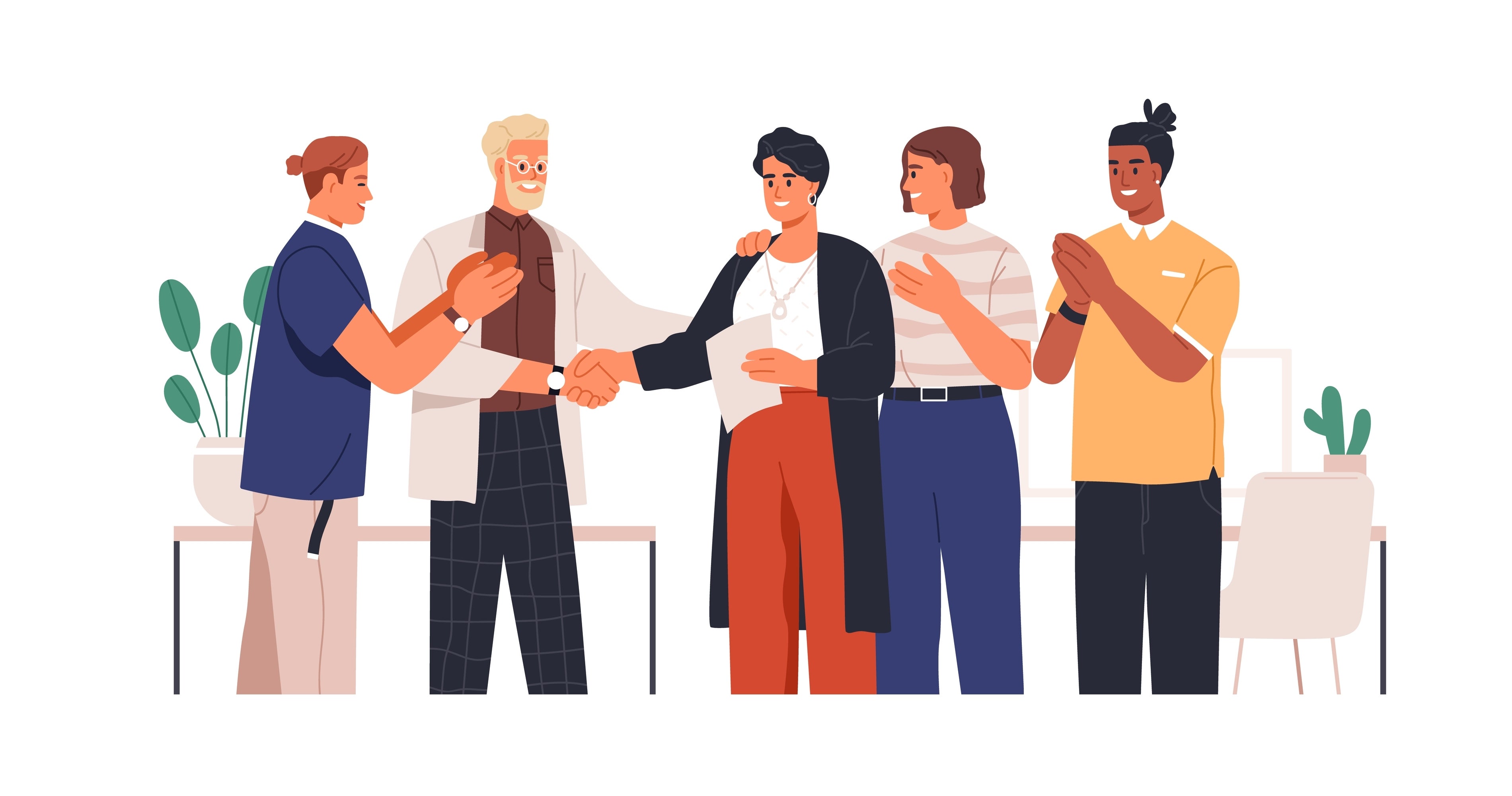
To inspire the business
Framing compliance issues such as freedom of information procedures as a higher purpose is one example. This includes “linking it to the concepts of transparency and accountability of government to the community and protecting the institution’s reputation so that it has the support of the community in the crucial projects it is carrying out.”
They also take inspiration from their CEO, Dr. Paul Hardisty, also a fiction author, who “uses storytelling at the highest levels of government and industry.” His way of communicating the “story” of AIMS and the critical importance of its mission are bolstered by his skills as an author, connecting with stakeholders in a powerful and personal way.
Don’t forget to add some fun
Jennifer Aaker and Naomi Bagdonas described being funny as a superpower in Humour Seriously and Don’t Stop Us Now. They argued that “viewing our mistakes through a comic lens can have a meaningful impact on our psychology” (see an earlier article).
Keeping positive and finding humor in what can feel like constant stress and obstacles goes a long way to keeping a positive and divergent mindset. It also makes an excellent addition to any narrative.
Keeping positive and finding humor in what can feel like constant stress and obstacles goes a long way to keeping a positive and divergent mindset.
Aaker and Bagdonas referred to Dick Costolo, former Twitter CEO, being self-effacing not just to earn likeability points but to great success as a leader. As he explained: “My job as a leader isn’t to prevent mistakes from happening; my job as a leader is to correct them as quickly as possible when they do happen. However, if nobody feels comfortable bringing me the bad news — it’s going to take me a lot longer to correct those mistakes.”
For Hoskins, creative communications include humor at many levels. This includes injecting humor into presentations as well as general client interactions to put people at ease and increase their positive emotions (which, as we know, helps us be more receptive to a message and retain it better). Hoskins and Paloni give the following tips on how to successfully use humor in the workplace:
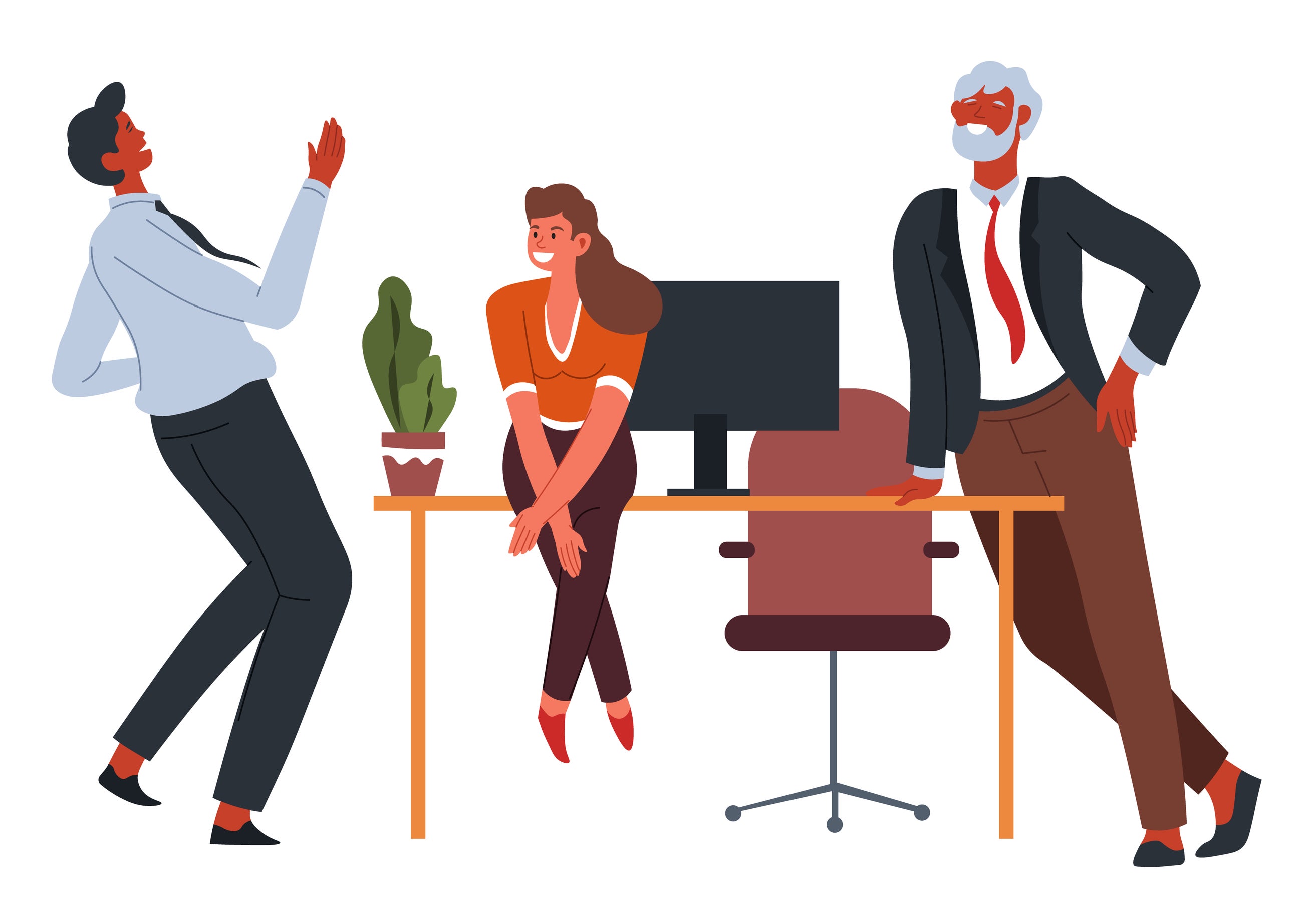
Know your audience
Hoskins warns: “The formality of the situation will guide what is appropriate, however even in serious situations dealing with important topics, some levity can break the ice and engage people in the message.”
Capture attention by using creativity
Hoskins says: “I once gave a presentation to the executive of AIMS on the topic of ‘Lessons Learned for Negotiating Large Contracts.’ While the paper that went to the executive was very concise and factual with a number of case studies, I presented the summary principles over PowerPoint slides where each point was a reference to a ‘90s movie.
“For example ‘Who’s Driving the Negotiations?’ was a reference to Speed, and ‘Make Sure the Negotiating Team Stay Aligned’ had a Mighty Ducks reference to the Flying V. Presenting serious principles with some amusing references in background got a few laughs and captured the group’s attention for the important messages more than simply summarising the paper.”
Inject fun through interactivity
It can also help bring an audience into the presentation and more fully invest in the message. Paloni recalls a time where he was exploring governance options for a complex new project with colleagues and stakeholders. “Instead of giving a formal presentation on different options and pros and cons and seeking feedback, I started by drawing one option on a whiteboard. I then split colleagues into groups to draw their own alternative diagrams for governance structure and present them with the reasons behind them. This generated much more involvement and ownership from those involved, and even a year later, colleagues still refer to various models they drew together on butcher’s paper.”
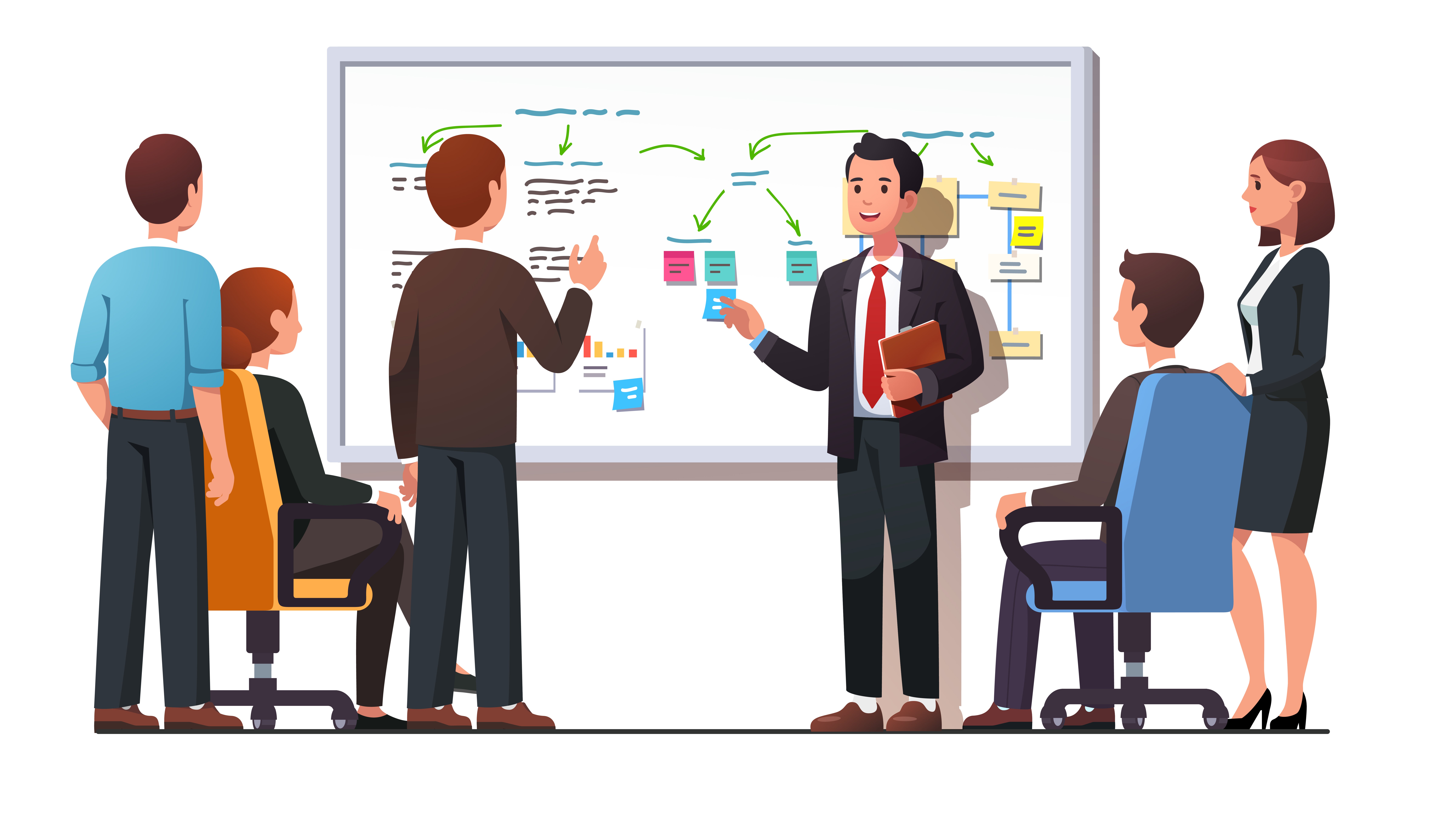
Use quizzes to grab the audience’s attention
Paloni says: “Even over Teams, any element of competition seems to wake people up, and where those techniques are used there seems to be an uptick in related questions for the legal team in the months afterwards, which shows people were paying attention and really absorbed the information presented.”
Cultivate creative communications
Creative communications are the skills of the future. As our client’s attention spans decrease, we need to find ways to better engage them and help them remember the messages we want to convey.
“Ultimately, creative communications are a way to make your clients understand your message and why it is important to the business’ goals and impact,” Hoskins says. “It should engage their emotions, make them feel smart and confident, and sometimes have fun. Your message will stay with them and make them feel they have an important part to play in business outcomes. Good communications are a gift to your colleagues. Working harder to communicate creatively instead of resorting to the status quo is hard work, but by putting in the hard work yourself you are making life easier for your colleagues, putting your audience’s needs first, and ultimately you will be more impactful as a lawyer.”
Cultivating creative communications will help you successfully convey your message, increase your own happiness, and keep you one step ahead of AI!
Disclaimer: The information in any resource in this website should not be construed as legal advice or as a legal opinion on specific facts, and should not be considered representing the views of its authors, its sponsors, and/or ACC. These resources are not intended as a definitive statement on the subject addressed. Rather, they are intended to serve as a tool providing practical guidance and references for the busy in-house practitioner and other readers.




